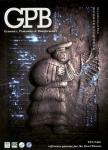Fuzzy Logic for Elimination of Redundant Information of Microarray Data
Fuzzy Logic for Elimination of Redundant Information of Microarray Data作者机构:LERIA Universit'e d'Angers 2 Boulevard Lavoisier 49045 Angers France
出 版 物:《Genomics, Proteomics & Bioinformatics》 (基因组蛋白质组与生物信息学报(英文版))
年 卷 期:2008年第6卷第2期
页 面:61-73页
核心收录:
学科分类:0710[理学-生物学] 1001[医学-基础医学(可授医学、理学学位)] 07[理学] 071007[理学-遗传学] 0714[理学-统计学(可授理学、经济学学位)] 0703[理学-化学] 0701[理学-数学] 0812[工学-计算机科学与技术(可授工学、理学学位)]
基 金:the French Ouest Genopole Program and the "Bioinformatique Lig'erienne" project of the "Pays de la Loire" Region Huerta EB is supported by a CoSNET research schol-arship
主 题:fuzzy processing gene selection dimension reduction classification
摘 要:Gene subset selection is essential for classification and analysis of microarray data. However, gene selection is known to be a very difficult task since gene expression data not only have high dimensionalities, but also contain redundant information and noises. To cope with these difficulties, this paper introduces a fuzzy logic based pre-processing approach composed of two main steps. First, we use fuzzy inference rules to transform the gene expression levels of a given dataset into fuzzy values. Then we apply a similarity relation to these fuzzy values to define fuzzy equiva- lence groups, each group containing strongly similar genes. Dimension reduction is achieved by considering for each group of similar genes a single representative based on mutual information. To assess the usefulness of this approach, exten- sive experimentations were carried out on three well-known public datasets with a combined classification model using three statistic filters and three classifiers.



